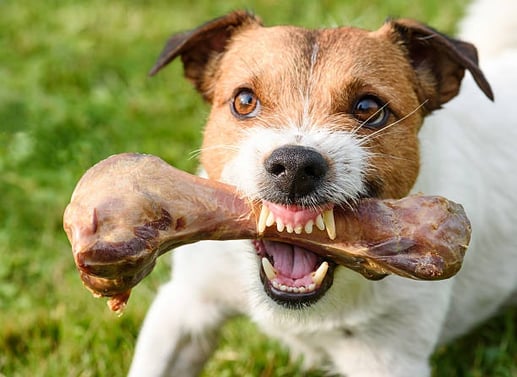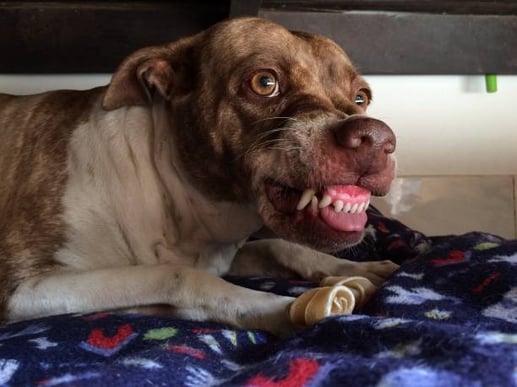Understanding and Addressing Resource Guarding in Dogs
Resource guarding is a common behavior seen in dogs that can lead to significant issues if left unchecked. Understanding why dogs protect their possessions is essential to addressing the behaviour effectively. This article will explore the root causes, signs, management strategies, and professional training solutions for resource guarding in dogs.
Martha Love
1/25/20253 min read


The Silent Threat of Resource Guarding
The Prevalence of Resource Guarding in Canines
Resource guarding can affect many dogs, regardless of age or breed. It is often seen in households where multiple pets reside. Dogs may feel the need to protect their food, toys, or even their owners from perceived threats. Knowing the common prevalence of this behaviour can help dog owners take preventive steps.
Unveiling the Triggers: Food, Toys, and More
Different items can trigger resource guarding. These include:
Food: Dogs may growl or snap when someone approaches while they eat.
Toys: A favourite toy can evoke strong protective behaviours.
Spaces: Dogs may guard specific areas they consider theirs, like a bed or a favourite corner.
The Importance of Early Intervention and Safe Handling
Early intervention is crucial. Recognising and addressing resource guarding behaviour can prevent more severe issues later. Creating a safe handling environment helps dogs feel less threatened, decreasing their need to guard.
Why Do Dogs Resource Guard?
Biological Predisposition and Survival Instincts
The Role of Genetics and Breed Predisposition
Certain breeds may be more prone to resource guarding due to genetic factors. Breeds known for herding or guarding may show this behaviour more than others.
The Evolutionary Basis of Resource Protection
Historically, protecting food and resources has been key to survival. Dogs have inherited this trait from their wild ancestors, who needed to defend their finds from competitors.


Learned Behaviors and Negative Experiences
Past Trauma and Its Impact on Resource Guarding
A dog that has experienced trauma, such as being starved, will often develop resource guarding behaviours. They associate food and possessions with times of scarcity.
Inconsistent Training and Reinforcement
Inconsistent training can confuse dogs. If a dog is rewarded sometimes for sharing and scolded other times, it can lead to anxiety and resource guarding.
Identifying the Signs of Resource Guarding
Subtle Cues: Watch Your Dog's Body Language
Signs of resource guarding can be subtle. Pay attention to:
Stiffening: A dog may stiffen up when someone approaches their item.
Growling and Lip Curls: Growling or curling lips is a clear warning sign.
Whale Eye and Yawning as Warning Signals: These can indicate discomfort or anxiety.
Overt Actions: Aggressive Displays and Bites
Over time, resource guarding can escalate. Behaviours can vary in severity:
Mild Guarding: Just stiffening or growling.
Aggressive Displays: Barking or lunging.
Bites: In extreme cases, the dog may bite if they feel cornered or threatened.


Safe and Effective Management Strategies
Preventing Resource Guarding Triggers
Creating a stable environment can help reduce guarding behaviours. Consider these approaches:
Controlled Feeding Environments: Feed your dog in a quiet, separate area where they feel secure.
Controlled Access to Resources: Limit access to toys or food when you cannot supervise.
Designated Safe Zones for Your Dog
Creating safe zones where the dog feels secure can aid in reducing anxiety related to resource guarding.
Modifying Your Dog's Behavior: Counter-Conditioning and Desensitization
Positive Reinforcement Training Techniques
Use treats to encourage sharing behaviours. Feed your dog treats when someone is near their food or toy, helping create positive associations.
Gradual Exposure to Triggers
Slowly introduce triggers in a controlled manner. Start from a distance and reward calm behaviour to help them learn that sharing is safe.
Professional Training and Intervention
When to Seek Professional Help: Recognizing the Limits of DIY Training
Recognising when to involve a professional is crucial.
Identifying Serious Cases of Resource Guarding
If your dog shows severe aggression, seeking professional help should be a priority. It is essential to ensure everyone’s safety, including your dog.
The Expertise of Certified Professional Dog Trainers
Trainers certified in behaviour modification can offer tailored strategies for your dog's unique situation.
Techniques Employed by Professional Trainers
Desensitization and Counter-Conditioning Protocols
Professional trainers typically use desensitization techniques to help dogs overcome guarding behaviours. This involves gradual exposure paired with positive reinforcement.
Medication as a Complementary Approach (With Vet Consultation)
In severe cases, medication may help manage anxiety. Always consult a veterinarian before starting any medication.
Conclusion: A Peaceful Coexistence Through Understanding and Training
Key Takeaways and Actionable Steps
Resource guarding can pose challenges, but understanding its roots can lead to effective management. Here are some steps to remember:
Recognise the signs early.
Create safe environments.
Use positive reinforcement.
Resources for Further Learning and Support
Consider reading more about dog behaviour or attending training classes to understand more about resource guarding and effective strategies.
The Long-Term Benefits of Addressing Resource Guarding
Addressing resource guarding not only improves your dog's behaviour but also strengthens the bond between you and your furry companion, paving the way for many happier moments together.
Sniffy Snoots
Disclosure: I only recommend products I would use myself.
All opinions expressed here are my own.
This site may contain affiliate links and I may earn a small commission, at no extra cost to you.
© 2024. All rights reserved.
